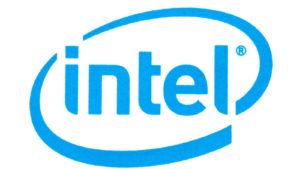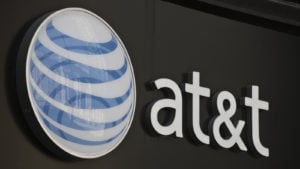With the stock market so hot again, investors will have a tough time differentiating between blue-chip stocks and momentum ones. The biggest difference between the two groups is that the former is usually a large company with a solid reputation. Blue-chip stocks also have a history of years of consistent earnings, regardless of the market conditions.
Given that criteria, investors have many stocks to choose from. Where should you begin? First, pick specific sectors benefiting from the “new normal” ahead.
The work-from-home trend will not go away in the near-term. Software-driven collaboration tools will continue growing in popularity. Conversely, the government is re-opening the economy slowly, which creates opportunities in the theme park space. Here are three technology companies, two drug stocks, and two entertainment giants to consider buying:
- Microsoft (NASDAQ:MSFT)
- Intel (NASDAQ:INTC)
- Apple (NASDAQ:AAPL)
- AbbVie (NYSE:ABBV)
- Biogen (NASDAQ:BIIB)
- Walt Disney Company (NYSE:DIS)
- AT&T (NYSE:T)
These companies are all well-known brands that offer reasonable valuations and strong growth prospects for years to come. Apple and Microsoft are obvious choices for most.
These picks are widely held. Many mutual funds and exchange-traded funds hold them. But because its prospects keep growing, investors should take still consider them as the best of the best blue-chip stocks to buy.
Microsoft (MSFT)

The first of our blue-chip stocks to buy on this list is Microsoft. Investors with over two decades of experience will remember when the Department of Justice separated Microsoft’s browser business from the rest of the units. When that order ended, Microsoft flourished quickly under CEO Satya Nadella. The software giant shut down its failed Windows Phone business. Instead, it turned its focus on Office365 for mobile and every other device, including the PC. Becoming the go-to software solution across all platforms sent subscription sales higher quarter after quarter for years.
As shown below, similar to its pears, Microsoft has a high growth and quality score. Gross margins are more than double that of the S&P 500 index. Also, investors may consider Adobe Systems (NASDAQ:ADBE) and VMware (NYSE:VMW) to get similar exposure to the explosive growth in software.
More recently, Microsoft continued to flourish during the pandemic. Its Teams chat application helped stay-at-home workers continue collaborating among other members of the office. Zoom Video (NASDAQ:ZM) may have soared to new heights, but Microsoft is a deeply diversified company. Its Azure platform offers cloud solutions for businesses. Its enterprise software titles, including SQL Server and Windows Server, generate plenty of cash for the company.
Apple (AAPL)

Trading at new yearly highs, Apple proved it could manage through the coronavirus-induced shutdown. It continued to sell iPhone devices online while stores closed.
As the economy reopened worldwide, Apple quickly opened several stores in phases to serve its customers. Looking ahead, Apple will embrace 5G after its competitors work through bugs on the first iteration. This will drive unit sales higher.
Below is a 5-year discounted cash flow model: Gordon growth exit, apply the following metrics:
| Metrics | Range | Conclusion |
| Discount Rate | 9.0% – 8.0% | 8.5% |
| Perpetuity Growth Rate | 4.3% – 4.8% | 4.5% |
| Fair Value | $310.91 – $438.10 | $362.59 |
Financial model courtesy of finbox
If Apple grows its revenue by 5% annually, then the stock has a fair value of around $363:
| USD in millions) | Input Projections | |||||
| Fiscal Years Ending | 19-Sep | 20-Sep | 21-Sep | 22-Sep | 23-Sep | 24-Sep |
| Revenue | 260,174 | 273,183 | 286,842 | 301,184 | 317,040 | 332,892 |
| % Growth | -2.00% | 5.00% | 5.00% | 5.00% | 5.30% | 5.00% |
| EBITDA | 76,477 | 84,687 | 86,053 | 90,355 | 95,112 | 99,868 |
| % of Revenue | 29.40% | 31.00% | 30.00% | 30.00% | 30.00% | 30.00% |
Table courtesy of finbox
Device sales are not the only profit-generator for Apple. The services business brought $13.3 billion in revenue in the second quarter, up an impressive 16.5% year-on-year. CFO Luca Maestri said that third-party subscription revenue grew to an all-time high of 30% Y/Y.
Maestri also said “Our first party subscription services also continued to perform very well. Apple Music and cloud services, both set all-time revenue record, and AppleCare set a March quarter record. Paid subscriptions for all three of these services were up strong double-digits.”
Intel (INTC)

Among semiconductor blue-chip stocks, Intel worried shareholders as it fell behind Advanced Micro Devices (NASDAQ:AMD) in the PC desktop, notebook, and server market. Although AMD’s EPYC fares far better than Intel’s Xeon solution, the company is taking its time to reduce power consumption while increasing performance.
In the desktop space, Intel has plenty of cash on hand to market its chips. Resellers like Dell Technologies (NYSE:DELL) and Lenovo often push Intel-powered computers over that offered from AMD.
Outside of the chip market, Intel’s Mobileye unit won a first-ever design win with a major OEM in Asia. In the last quarter, Mobileye’s revenue grew 22% Y/Y, while operating income rose by 29%. CEO Bob Swan warned that “we expect 2020 revenue growth will be lower than our prior expectations as automobile production and volume ramps are being materially impacted by COVID-19.“
Intel’s short-term slowdown in the automotive space will not last long. When the segment recovers, its shares could trade at new highs later this year.
AbbVie (ABBV)

AbbVie typically pays a dividend that is in the 5% range. And with its merger with Allergan, the firm has a deep pipeline that ensures strong cash flow in the years ahead. Investors can bet on the company increasing its dividend, possibly again this year.
AbbVie is working on a drug to treat the novel coronavirus. Together with Harbour Biomed, Utrecht University, and Erasmus Medical Center, the companies are developing a monoclonal antibody therapy. Inovio (NASDAQ:INO) and Moderna (NASDAQ:MRNA) are leaders in the vaccine development against Covid-19. But hospitals still have no feasible drug to treat those infected by the virus. By accelerating its development, AbbVie and its partners have a chance to develop a potentially good treatment.
AbbVie stock, even as it trades in the 52-week high range, is in value territory. At around 8 times forward earnings, markets are giving the company little credit in its rich and diverse pipeline in the areas of immunology, oncology, and other areas.
Biogen (BIIB)

Biogen is trading in a narrow range in the last six months because the company is busy shoring up its cash balance. The company sold $3 billion worth of debt in late April 2020. This lowers its costs of debt and will help it save money.
In the first quarter, the company reported revenue growing 1% to $3.53 billion. Its diluted earnings per share grew 13% to $8.08 and were up 31% to $9.14 on a non-GAAP basis.
Biogen’s aducanumab regulatory filing is a positive catalyst for BIIB stock. Its existing business also continues to grow steadily. Its multiple sclerosis revenue grew 9% to $2.3 billion. In the neuromuscular market, Spinraza revenue grew 9% to $565 million. The company reported a strong cash flow of $1.2 billion in the period.
On June 4, the company announced positive Phase 2 results for its Cutaneous Lupus Erythematosus study. Previously it said that Vir Biotechnology (NASDAQ:VIR) would manufacturer coronavirus antibodies for potential treatment. The market did not react at all to the news. This suggests that investors care more about the company navigating past the delays for its Alzheimer’s drug.
Walt Disney Company (DIS)

After shutting down its theme parks, Disney announced a phased re-opening starting in July. This will potentially bring back 70,000 jobs. On May 29, Florida permitted the company to re-open on that July date. When Disney reopened its parks in Shanghai, tickets sold out rapidly. The pent-up demand in the U.S. should lead to strong attendance. This will translate to a rebound in revenue that will give DIS stock a lift.
During the pandemic, Disney’s streaming services demand grew around the world, but the movie business is the bigger driver to revenue. CEO Bob Chapek said: “We very much believe in the value of the theatrical experience overall to launch blockbuster movies. As you know, we had 7 $1 billion films in calendar year ‘19. “
The re-opening of film studios is another positive catalyst that will drive the Disney stock rebound.
On simplywall.st, DIS stock has a fair value of around $114. And on Wall Street, the average price target is $117. (per tipranks).
AT&T (T)

The last on this list of blue-chip stocks to buy is AT&T. Not only is AT&T’s dividend yield in the 6% range attractive, but WarnerMedia, its entertainment unit, is a potential growth driver.
Last month, HBO Max struck a distribution deal at the last minute with Comcast (NASDAQ:CMCSA). By limiting the availability of HBO Max, AT&T will ensure healthy monthly subscription rates. Still, a deal with Roku (NASDAQ:ROKU) would expand HBO’s reach and grow its addressable market.
In the last quarter, AT&T said that Covid-19 had about a $400 million revenue impact and a $250 million EBITDA impact. Looking ahead, as businesses reopen and the government relaxes the stay-at-home order, AT&T’s media unit will report improving revenue. This will be driven by continued growth in HBO Max subscriptions, movie releases to theaters, and recovery in advertising revenue.
As of this writing, the author did not hold a position in any of the aforementioned securities. Chris is on twitter and runs the DIY Value Investing Marketplace guide.
